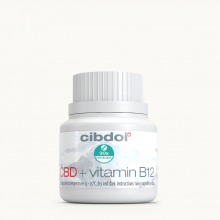How to Grow a Beard?
Published:
If you're looking to craft a beard that fits your style and face, this guide will provide the necessary information on how to do so. Gaining a luscious, full beard necessitates commitment and the correct maintenance practices, in addition to knowing what affects facial hair growth.
Contents:
- Setting Realistic Expectations for Beard Growth
- Initial Stages of Growing a Beard
- Maintaining Healthy Skin Beneath Your Beard
- Defining Your Beard Boundaries
- Lifestyle Factors Affecting Facial Hair Growth
- Beard Grooming Essentials
- Daily Beard Care Routine
- Sculpting Your Desired Beard Style
- Supplements & Natural Remedies for Faster Beard Growth
- FAQs in Relation to How to Grow a Beard
- Conclusion
In this comprehensive guide on how to grow a beard, we will delve into setting realistic expectations for your beard's growth rate while considering individual differences in facial hair patterns. We'll also discuss essential grooming techniques during the initial stages of growing a beard and maintaining healthy skin beneath it.
Furthermore, we will explore lifestyle factors that can impact your facial hair growth and provide valuable tips on sculpting your desired beard style. Finally, we'll touch upon supplements and natural remedies that may help promote faster growth for those looking to achieve their ideal bearded look more quickly.
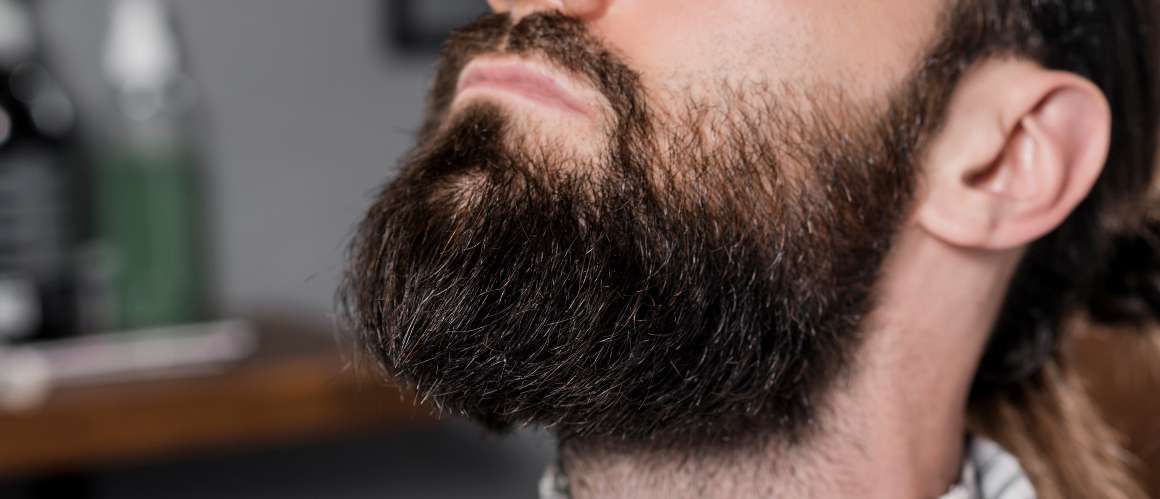
Setting Realistic Expectations for Beard Growth
It's essential to set realistic expectations based on your facial hair growth pattern, as everyone's facial hair grows at different speeds, thicknesses, and ranges. Realizing that achieving the desired look may take some time, based on elements like heredity and age, is essential.
Factors Affecting Beard Growth Rate
Several factors can affect your beard growth rate, including genetics, hormone levels (such as testosterone), nutrition, stress levels, and overall health. While you cannot control all of these factors completely (like genetics), making healthy lifestyle choices can positively impact your facial hair.
- Hormones: Testosterone plays a significant role in facial hair development. Low testosterone levels might result in slower or patchy beard growth.
- Nutrition: A balanced diet rich in vitamins and minerals is crucial for healthy hair follicles and optimal beard growth.
- Lifestyle: Regular exercise helps improve blood circulation, which encourages healthier skin cells around the face region where new hairs sprout from.
- Sleep: Your body repairs itself during sleep; hence getting enough rest is vital for promoting proper cell regeneration necessary for growing a fuller beard faster.
Understanding Individual Differences in Facial Hair Patterns
No two people have identical facial hair patterns—some men naturally grow thicker beards while others struggle with sparse or patchy coverage due to their genetic makeup. It's important not to compare yourself with others when trying to achieve your desired beard style. Instead, focus on maximizing your own potential by following the right grooming techniques and lifestyle habits.
It may take some time for your beard to reach its full potential, so be patient. Patience is key when growing facial hair, as rushing through the process may lead to uneven growth or an unsatisfactory final result. As you embark on your journey towards achieving a fuller, healthier-looking beard, remember that every man's experience will be unique—embrace your individuality and enjoy the process.
It is essential to have reasonable expectations of facial hair development so as not to be let down with the outcomes. Understanding individual differences in facial hair patterns can help ensure a successful and satisfying beard-growing experience, which will be discussed further in the next heading.
Initial Stages of Growing a Beard
For an optimal beard, abstain from shaving or trimming your facial hair for a few weeks to assess the thickness and pattern of growth. This allows your facial hair growth to progress naturally and helps you gauge the thickness and pattern of your beard. During this period of growth, maintaining good skin hygiene is crucial in promoting healthy follicle development.
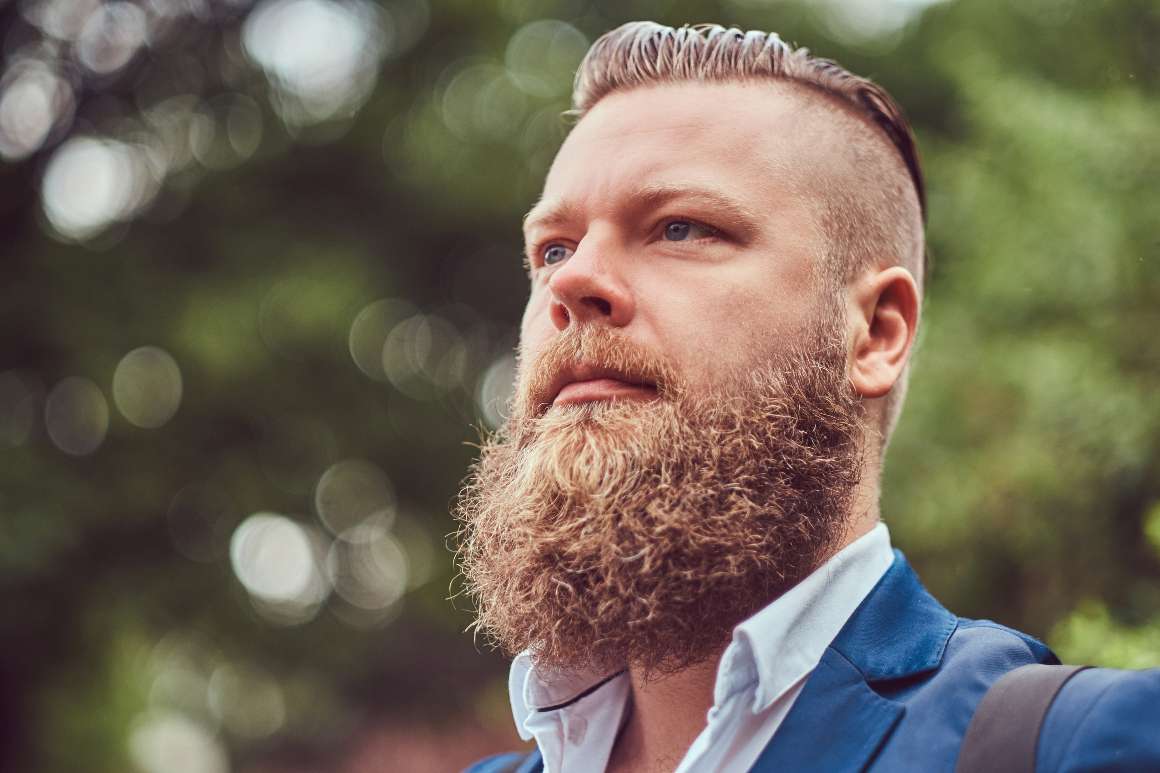
Importance of Not Shaving During Initial Stages
Resisting the urge to shave during the initial stages ensures that all hairs have an equal opportunity to grow. If you trim or shave too early, some hairs may not reach their full potential, leading to an uneven or patchy appearance. Comparisons should be avoided as facial hair growth varies from person to person due to genetic and age-related elements.
Proper Cleansing Techniques for New Beards
- Dedicated Beard Wash: Washing your face every morning and night using an appropriate cleanser or dedicated beard wash can help remove dirt, oil, and dead skin cells that could adversely affect beard growth. A gentle formula designed specifically for beards will prevent stripping away natural oils necessary for healthy hair follicles.
- Avoid Harsh Chemicals: Avoid using products containing harsh chemicals like sulfates which can damage both your skin and facial hair over time. Opt instead for organic ingredients when possible.
- Pat Dry: After washing your face thoroughly with lukewarm water (not hot), gently pat your skin and beard area dry with a clean towel. Rubbing vigorously can cause irritation or damage to the hair follicles, hindering growth.
While you may be eager to see results quickly, it's essential to remain patient during this initial stage of beard growth. By avoiding shaving and practicing proper cleansing techniques, you'll create an ideal environment for your facial hair to flourish.
Additional Resources:
- Beard Growth Tips from Beardbrand
- How To Grow A Beard Faster by Men's Health
- How To Grow A Thicker Beard by The Art of Manliness
- The Ultimate Guide on How To Grow & Maintain A Beard by Bespoke Unit
Waiting is key when starting to grow a beard; don't rush it, as facial hair will take time to come in. Additionally, proper cleansing techniques are necessary in order to maintain healthy skin beneath your new beard; exfoliating and using the right moisturizer can help keep skin clean and hydrated.
Maintaining Healthy Skin Beneath Your Beard
To achieve a full, thick beard and healthy skin beneath it, proper skincare is essential. This can be achieved by following a proper skincare routine specifically designed for men with facial hair. To maintain healthy skin beneath the beard, it is important to exfoliate regularly and choose a suitable moisturizer.
Benefits of Exfoliating Under The Beard Area
Removing dead skin cells from beneath your beard on a regular basis can help unclog pores, prevent ingrown hairs and acne breakouts, as well as stimulate healthy hair growth. It also promotes better blood circulation in the area, stimulating hair follicles and encouraging healthier beard growth. When selecting an exfoliant product, look for one specifically formulated for facial use or choose a gentle scrub suitable for sensitive skin.
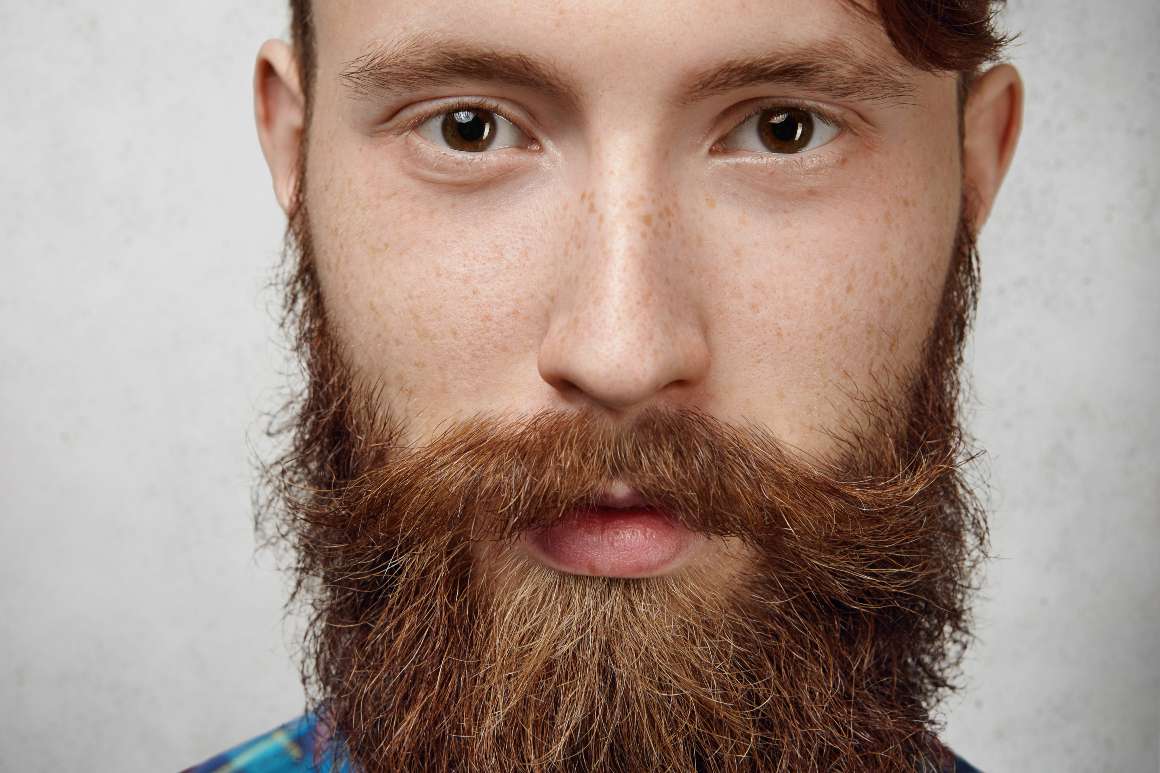
Choosing The Right Moisturizer
A good moisturizer plays a crucial role in maintaining healthy facial hair growth. It keeps your skin hydrated and prevents dryness that may adversely affect beard growth. Opting for products specially designed for beards ensures they contain ingredients beneficial to both your hair follicles such as natural oils like argan oil or jojoba oil. These oils not only nourish but also help prevent itchiness commonly experienced during early stages of growth.
- Dedicated Beard Wash: Using dedicated washes made explicitly for beards will clean without stripping away natural oils necessary to maintain moisture levels within both strands themselves & underlying skin too.
- Beard Oil: Beard oil is an essential product for men who want to grow a fuller beard. It moisturizes the skin beneath your facial hair, reduces itchiness and irritation, and provides nutrients that promote healthy growth.
- Moisturizing Beard Balm: A balm can be used in addition to or instead of beard oil. It offers similar benefits while also providing light hold for styling purposes—perfect for those looking to tame unruly hairs throughout the day without weighing down the face/head region altogether—an ideal solution indeed.
Incorporating these skincare steps into your daily routine will not only help maintain a healthy environment for beard growth, but it will also improve the overall appearance and texture of your facial hair. For optimal results, be sure to maintain a regular skincare routine for your beard in order to achieve the desired thickness and fullness.
Maintaining healthy skin beneath your beard is essential to achieve a clean and polished look. To complete the perfect facial hair style, it's important to define your beard boundaries correctly.
Defining Your Beard Boundaries
As your beard starts taking shape, it's essential to keep it defined by shaving the neckline and cleaning up cheek lines with precision trimmers or razors. Establishing these boundaries early in the process will help create an intentional appearance rather than looking unkempt during initial stages of growth. In this section, we'll discuss how to shave necklines properly and clean up cheek lines for a well-groomed look.
Shaving Necklines Properly
To achieve a natural-looking neckline, follow these steps:
- Determine the ideal neckline: Place two fingers above your Adam's apple - this is where your beard should end on your neck. Draw an imaginary line from ear to ear passing through this point.
- Create guidelines: Use a trimmer or razor to carefully outline the desired shape along the imaginary line you've drawn.
- Clean up excess hair: Shave off any hairs below the guideline you created using short strokes while being cautious not to cut into your established boundary.
- Maintain consistency: Regularly touch-up as needed depending on how fast your facial hair grows back in order not only to maintain but also to improve upon overall appearances too.
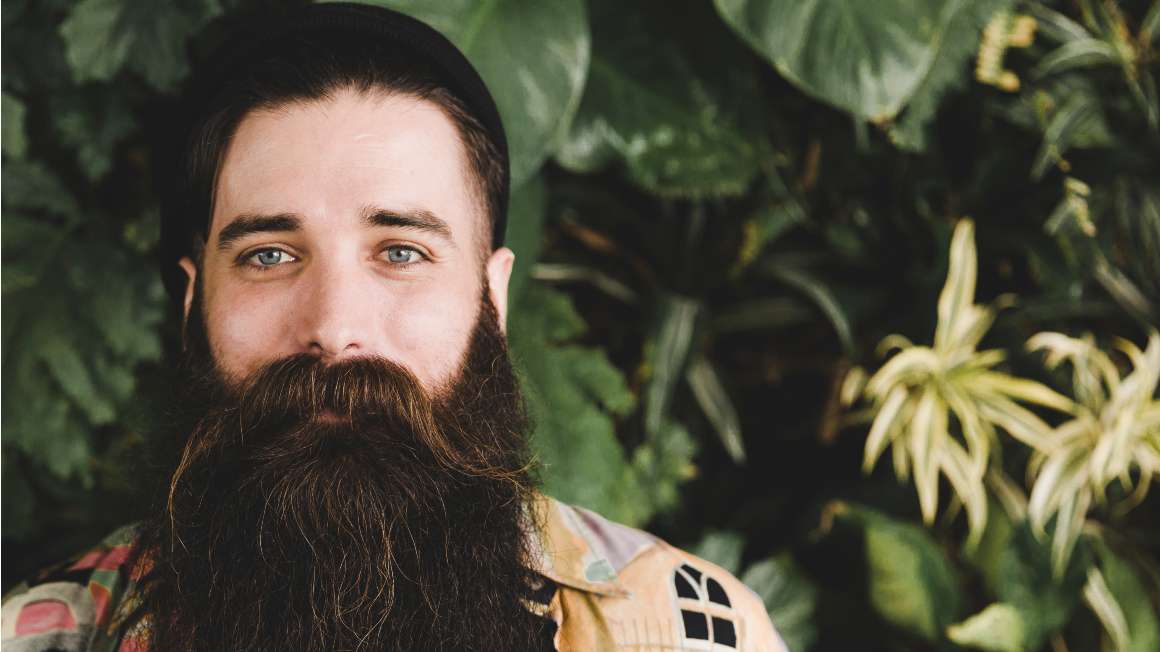
Cleaning Up Cheek Lines
Achieving sharp cheek lines can enhance both face structure and overall style when done correctly; here are some tips for doing so effectively:
- Finding natural curves: Your cheeks' upper edge should generally follow the natural curve of your cheekbones, creating a smooth line from the sideburns down towards the corners of your mouth.
- Creating symmetry: Make sure both sides are even by using a straight edge or comb as guidance while trimming away stray hairs with precision tools like beard trimmers.
- Avoiding over-shaving: Be cautious not to shave too high up on cheeks; doing so can make facial features appear unbalanced and lead to an unnatural look overall. Stick within reasonable boundaries based upon individual face shape preferences accordingly.
Incorporating these techniques into your beard grooming routine will help you achieve well-defined necklines and cheek lines that complement your growing facial hair. Persevere, and you'll soon be able to craft a fashionable beard that radiates self-assurance. With patience and persistence, you'll soon have a sharp-looking beard that showcases both style and confidence.
Defining your beard boundaries is an important step in achieving the look you desire. Maintaining a neat, presentable look can be achieved with the right care and consideration. Now let's explore lifestyle factors that may affect facial hair growth for optimal results.
Lifestyle Factors Affecting Facial Hair Growth
Considering the lifestyle factors that can influence facial hair growth is key when attempting to cultivate a beard. Getting enough sleep, exercising regularly, eating healthily, and managing stress levels are all crucial components that can promote healthier hair growth rates while boosting testosterone levels—a hormone related directly to follicle development.
Importance of Sleep and Exercise
Adequate shut-eye (7-8 hours) is essential for overall health and can be a huge factor in helping your beard reach its full potential. During sleep, our bodies repair damaged cells and tissues which aid in the proper functioning of the hair follicles. Additionally, regular exercise (at least 30 minutes daily) helps improve blood circulation throughout the body—including your face—providing essential nutrients required for optimal facial hair growth.
Diet and Stress Management for Beard Growth
Maintaining a balanced diet rich in vitamins & minerals is necessary to encourage beard growth. Consuming foods high in biotin such as eggs or nuts; vitamin E found in avocados or spinach; omega-3 fatty acids from fish oil supplements or flaxseeds—all contribute towards improving hair quality & thickness. Moreover, managing stress through relaxation techniques like meditation or yoga can help prevent hormonal imbalances caused by cortisol release which may adversely affect beard growth.
- Eggs: Rich source of biotin - promotes stronger strands
- Nuts: Packed with essential nutrients for healthy hair growth
- Avocados: High in vitamin E - enhances follicle health
- Spinach: Rich in iron and other minerals required for optimal beard development
- Fish oil supplements or flaxseeds: Provide omega-3 fatty acids - improve overall hair quality & thickness
Incorporating these lifestyle changes can significantly impact your facial hair growth tips, resulting in a fuller, healthier-looking beard. Remember that consistency is key—maintaining good habits over time will yield the best results.
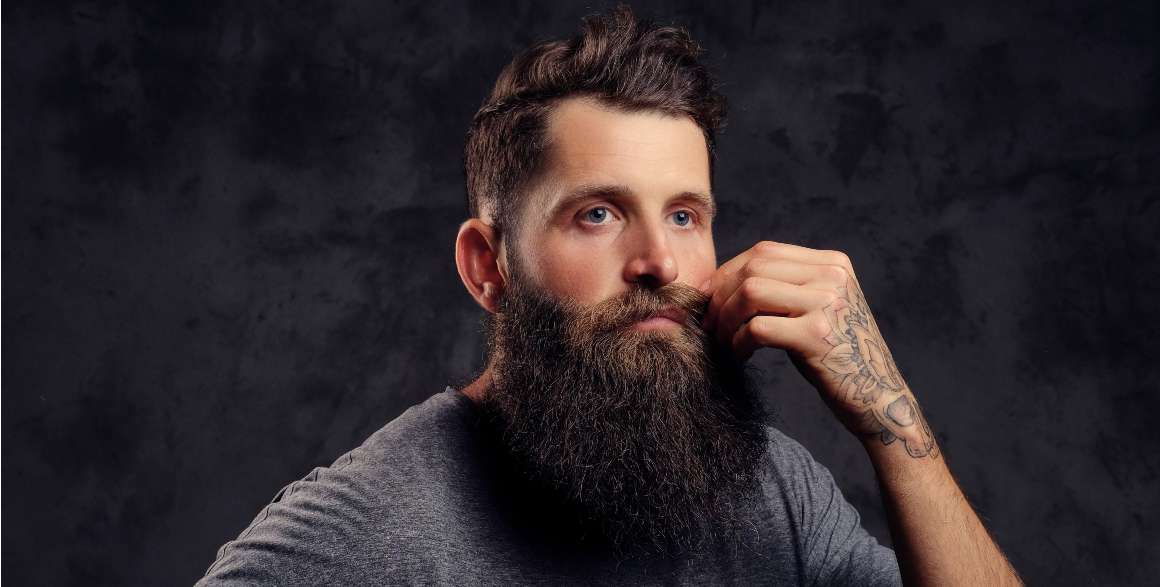
Cibdol CBD products
, such as their high-quality CBD oil, may also contribute to promoting facial hair growth by reducing inflammation and improving blood circulation around the hair follicles. This could potentially create an ideal environment for new hairs to sprout while supporting existing ones' strength and vitality.
Note that individual results may vary; it's crucial to be patient and persistent when trying different methods to enhance your beard's appearance.
In order to maintain a healthy lifestyle that will foster facial hair growth, it is important to get enough sleep, exercise regularly, manage stress and eat a balanced diet. Grooming your beard with pre-shave oils and specialized beard oil can help make sure that your facial hair looks its finest.
Beard Grooming Essentials
Maintaining a beard properly with the right grooming techniques is key to keeping it looking healthy and attractive. Utilizing essential grooming products can make all the difference in achieving a well-groomed appearance.
Benefits of Using Pre-Shave Oils
Pre-shave oils are an ideal choice for softening facial hair and protecting skin from irritation while shaving. These oils also create a protective barrier between your skin and razor, reducing irritation caused by friction during the grooming process. By incorporating pre-shave oil into your regimen, you'll experience smoother shaves while minimizing potential damage to both your skin and facial hair.
Choosing the Right Beard Oil
Selecting an appropriate beard oil is crucial for keeping frizz at bay without weighing down your facial hair too heavily. High-quality beard oils contain nourishing ingredients like argan oil, jojoba oil, and grapeseed oil that promote healthier hair growth while providing hydration to prevent dryness and itchiness.
- Argan Oil: Rich in antioxidants, vitamin E, and fatty acids that help repair damaged follicles while promoting overall health of beard hairs.
- Jojoba Oil: Closely resembles natural sebum produced by our skin which helps balance moisture levels within the beard area without clogging pores or causing breakouts.
- Grapeseed Oil: Lightweight and non-greasy, it helps lock in moisture while providing essential nutrients for hair growth.
When choosing a beard oil, consider factors such as your skin type (oily, dry, or sensitive), the thickness of your facial hair, and any specific concerns like dandruff or itchiness. Experiment with different oils to find the one that works best for you and provides optimal results in terms of both appearance and comfort.
Applying Beard Oil Correctly
To maximize the benefits of beard oil, apply it correctly by following these simple steps:
- Cleanse Your Beard: Ensure your beard is clean before applying oil; this allows better absorption into the hairs and skin beneath.
- Distribute Evenly: Place a few drops of oil onto your palms then rub them together to warm up the product. Gently massage it through your facial hair using fingertips ensuring even distribution from roots to tips.
- Brush Through: Use a dedicated beard brush, comb, or fingers to evenly distribute the oil throughout while detangling knots and taming frizz-prone areas.
Remember, proper grooming practices are essential for beard growth and maintenance. Incorporating pre-shave oils and high-quality beard oils can encourage beard growth while preventing damage and dryness. Additionally, using a dedicated beard wash and trimmer can help you achieve your desired beard style while keeping it looking neat and tidy. Don't let patchy beard or hair loss discourage you; low testosterone levels or face shape can adversely affect beard growth, but with the right grooming routine, you can still achieve a fuller beard.
Beard maintenance is a crucial factor for achieving optimal appearance and confidence, so make sure to invest in the correct items for your facial hair. Now that we have discussed the basics of beard care, let's move on to daily maintenance routines.
Daily Beard Care Routine
Establishing a daily care routine is essential for keeping your facial hair healthy and well-groomed as it grows. A proper regimen will help distribute the natural oils produced by your skin, preventing breakage, frizzing, and split ends while keeping your beard clean and fresh.
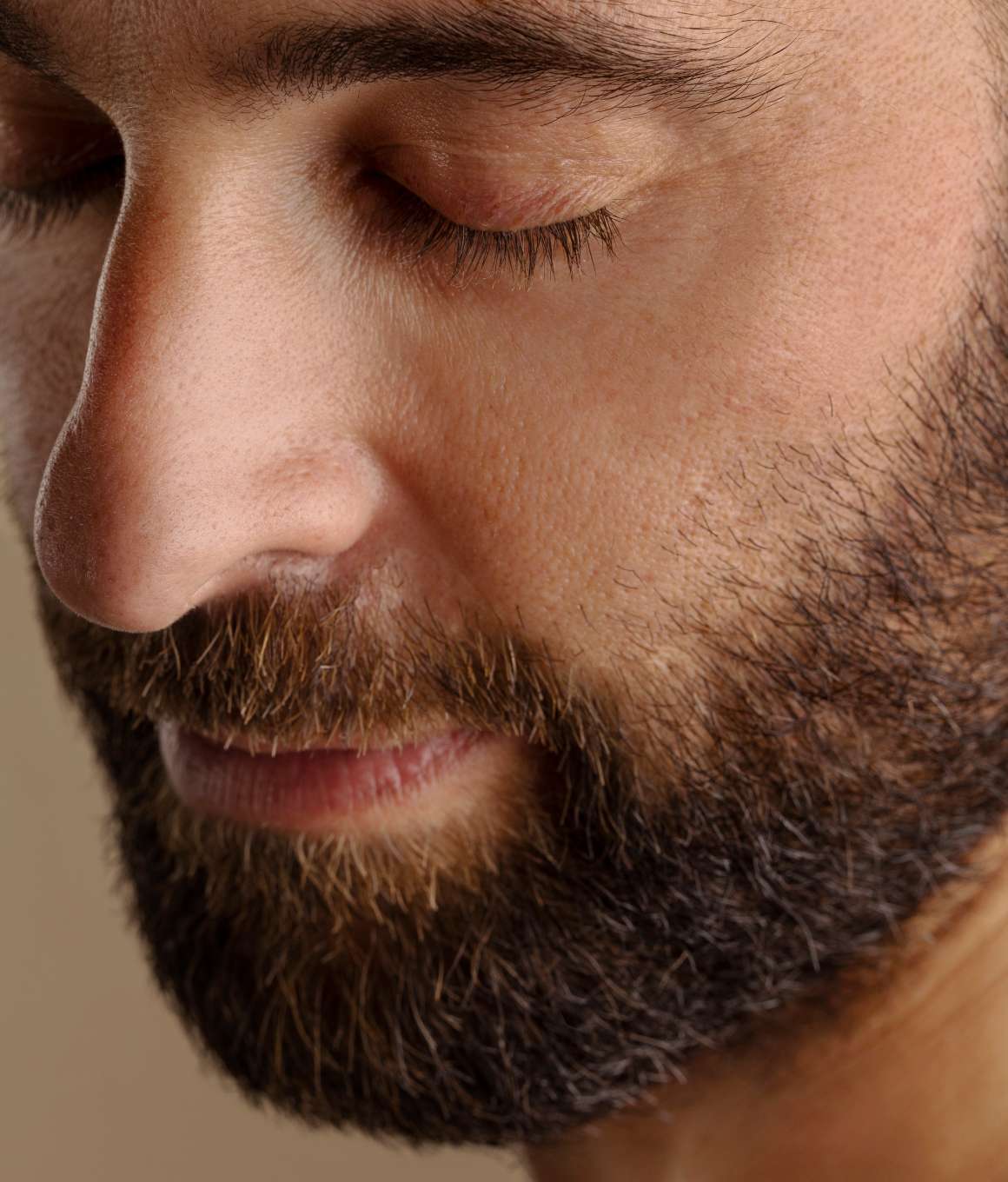
Proper Brushing Techniques for Beards
Brushing is an integral part of maintaining a well-groomed beard. It helps detangle knots and evenly distributes the natural oils throughout the hair strands. To brush effectively:
- Select a high-quality boar bristle or synthetic bristle brush designed specifically for beards.
- Gently brush through your facial hair in downward strokes after showering when hairs are damp but not soaking wet.
- Avoid brushing too forcefully as this can cause damage to both the hair follicles and skin beneath.
- Incorporate regular brushing into your morning grooming routine to keep hairs manageable throughout the day.
Washing Your Beard Correctly
Cleaning is another crucial aspect of maintaining a healthy beard. Washing removes dirt, sweat, dead skin cells, food particles - all factors that could adversely affect beard growth if left unattended. Follow these steps for effective washing:
- Select appropriate products: Avoid using harsh shampoos meant for scalp hair on facial hair; instead opt for dedicated beard washes or gentle cleansers that won't strip away essential oils.
- Frequency: Wash your beard 2-3 times per week to prevent over-drying. Adjust the frequency based on factors such as climate, lifestyle, and personal preference.
- Technique: Gently massage the beard wash into your facial hair using circular motions, ensuring you reach the skin beneath. Rinse thoroughly with lukewarm water to remove all product residue.
- Drying: Prioritize air drying or use a soft towel to gently pat dry without rubbing vigorously - this can cause damage and frizzing of hairs.
In addition to brushing and washing, consider incorporating other elements like beard oil, balms, and conditioners into your daily routine for added benefits in terms of nourishment and styling control. These products not only promote healthier hair growth but also help maintain desired beard styles throughout the day.
Daily beard care routine is essential to maintain a healthy and attractive look. Therefore, it's important to learn how to properly trim your desired style for the perfect facial hairstyle that complements your face shape.
Sculpting Your Desired Beard Style
Once you have achieved a satisfactory base growth for your beard, consider sculpting or trimming it according to personal preference. For instance, snip the bridge between the mustache and chin area or pare back some parts of the beard itself to create a more defined look that suits individual face shapes best (e.g., full beards work well with oval faces). In this section, we will discuss tips for trimming different styles and matching facial hairstyles with face shape.
Tips for Trimming Different Styles
- Stubble: To maintain an attractive stubble look, use a beard trimmer set at around 1-3 mm length. Trim regularly to keep the desired length and clean up necklines and cheek lines as needed.
- Moustache: Comb your mustache downward before using scissors or trimmers to remove excess hair along the upper lip line. Shape it according to your preferred style - from pencil-thin to bushy handlebars.
- Goatee: Define the goatee's boundaries by shaving cheeks and neck areas while leaving hair on the chin and above the upper lip intact. Use precision tools like detail trimmers or razors for accurate shaping.
- Fade: Create smooth transitions between different lengths of facial hair by adjusting beard trimmer settings accordingly - starting from longer hairs near the jawline down towards shorter ones closer to the neckline region overall effect-wise.
Matching Facial Hairstyles with Face Shape
When selecting a beard style, it's essential to consider your face shape as different styles can accentuate or soften specific facial features. Here are some general guidelines for matching beard styles with various face shapes:
- Oval: This versatile shape allows for most beard styles, including full beards and goatees.
- Square: Opt for shorter sides and longer chin hair to create a more elongated appearance - try a circle beard or extended goatee.
- Rounded: Aim at adding length while slimming down cheeks by growing out chin hairs (e.g., anchor-shaped beards).
- Diamond: Balancing wide cheekbones requires fuller sides combined with trimmed chins - experiment using variations upon classic mutton chops.
In conclusion, sculpting your desired beard style is an essential step in achieving the perfect look that complements both personal preferences and individual face shapes alike. By following these trimming tips and matching appropriate hairstyles accordingly based upon one's unique facial structure, the overall end result should leave anyone feeling confident enough to sport their newfound mane proudly throughout daily life activities without any worries whatsoever regarding how others may perceive them during interactions altogether indeed.
With the right techniques and products, sculpting your desired beard style is an achievable goal. For those looking to speed up their growth process, supplements and natural remedies can provide a helpful boost.
Supplements & Natural Remedies for Faster Beard Growth
Incorporating supplements and natural remedies into your daily routine can help promote faster beard growth by providing essential nutrients required for healthy follicle development and overall appearance improvements. Let's explore some popular options that may aid in achieving a thicker, fuller beard.
Benefits of Biotin for Beard Growth
Biotin, a form of vitamin B7 or H, is necessary for proper metabolism and the production of keratin which is found in hair follicles. It helps the body convert food into energy and supports the production of keratin, which is a protein found in hair, skin, and nails. Studies have shown that biotin supplementation can improve hair growth rates and reduce shedding. Although there are no specific studies on biotin's effects on facial hair growth specifically, it stands to reason that this supplement could potentially benefit those looking to grow their beards faster.
Using Olive Oil and Avocado Oils to Promote Thickness
Natural oils like olive oil and avocado oil applied topically onto the beard area can help thicken strands, giving an even fuller impression all-around. Both oils contain beneficial fatty acids that nourish the skin beneath your facial hairs while moisturizing individual strands themselves, making them less prone to breakage over time. To use these oils effectively, follow the steps below:
- Warm a small amount of olive or avocado oil in your hands.
- Gently massage the warmed oil into your beard and skin beneath it for several minutes.
- Leave the oil on for a minimum of 30 minutes before rinsing off with warm water or using specialized beard cleanser.
In addition to biotin supplements and natural oils, there are other lifestyle factors that can positively impact facial hair growth. For example, maintaining a balanced diet rich in vitamins and minerals like zinc, iron, and vitamin D3 will help support healthy hair follicles overall. Consuming foods high in omega-3 fatty acids (e.g., salmon) may also contribute towards better blood circulation around the face region, potentially encouraging more rapid strand development as well.
Lastly, don't forget about good old-fashioned patience when trying to grow a full beard faster. It's important to remember that everyone's genetics play a major role in determining how quickly one person might achieve desired results compared to another individual with an entirely different set of circumstances. Adversely affecting beard growth can be low testosterone levels, hair loss, and hair color. So, it's important to take care of your beard hairs and use a beard oil to encourage beard growth. Also, consider your face shape and beard styles when trimming your beard with a dedicated beard trimmer to achieve a fuller beard. If you can't grow a full beard, don't worry, a patchy beard can still look great too.
FAQs in Relation to How to Grow a Beard
What are the best products for growing a beard?
The best products for growing a beard include beard oil, pre-shave oils, and moisturizers. These help to keep your skin healthy, promote hair growth, and maintain overall beard health. Additionally, using a high-quality trimmer or scissors for trimming is essential.
How long does it take to grow a full beard?
A full beard typically takes about 2-6 months to grow, depending on factors such as genetics, age, and lifestyle habits. However, individual results may vary due to differences in facial hair patterns and growth rates.
Are there any tips for maintaining a healthy beard?
To maintain a healthy beard:
- Cleanse regularly with a dedicated beard wash
- Maintain skin health beneath the beard by exfoliating and moisturizing
- Groom daily with appropriate tools like brushes or combs
- Trim regularly according to desired style using a beard trimmer
Is there anything I should avoid when trying to grow a beard?
Avoid shaving during the initial stages of growth as this can adversely affect beard growth. Also, refrain from excessive touching or pulling at your facial hair which can cause damage or slow down growth.
Does diet affect how quickly my beard grows?
Yes, diet can play a role in beard growth. Eating a balanced diet rich in vitamins and minerals can encourage beard growth. Additionally, low testosterone levels, which can be caused by a poor diet, can lead to hair loss and slower facial hair growth.
Try incorporating foods that are high in protein, such as eggs and lean meats, as well as foods that are high in vitamins B3, B5, and B9, such as nuts, fish, and leafy greens, into your diet to promote facial hair growth.
Remember, growing a beard takes time and patience. By following these tips and maintaining a healthy lifestyle, you can encourage beard growth and achieve the beard style you desire.
Conclusion
Growing a beard is not just about letting your facial hair grow out. It requires patience, dedication, and proper care to achieve the desired results. By setting realistic expectations for growth rate, understanding individual differences in facial hair patterns, maintaining healthy skin beneath your beard, defining your beard boundaries, considering lifestyle factors affecting growth, using grooming essentials and natural remedies for faster growth; you can sculpt your desired style.
Remember that growing a beard takes time and effort, but it's worth it when done correctly. With these tips and tricks on how to grow a beard properly, you will be able to achieve the look you desire while keeping your skin healthy at the same time.
- Beard Growth Tips:
1. Boost your testosterone levels: Testosterone is the hormone responsible for facial hair growth. Low testosterone levels can lead to slow or patchy beard growth. You can increase your testosterone levels by exercising regularly, getting enough sleep, and eating a healthy diet.
2. Keep your skin healthy: A healthy skin is essential for beard growth. Use a gentle cleanser to wash your face and beard regularly. Apply a moisturizer to keep your skin hydrated and prevent dryness and itching.
3. Define your beard boundaries: Decide on the shape and style of your beard. Use a trimmer to define the boundaries and remove any stray hairs.
4. Consider lifestyle factors: Smoking, stress, and poor diet can affect beard growth. Quit smoking, manage stress, and eat a balanced diet to promote healthy hair growth.
5. Use grooming essentials: Use a beard oil or balm to keep your beard soft, shiny, and healthy. Use a comb or brush to detangle your beard and distribute the oil evenly.
6. Natural remedies for faster growth: Apply natural oils like coconut oil, castor oil, or jojoba oil to your beard to promote faster growth. Massage the oil into your skin and leave it on for a few hours before washing it off.
7. Experiment with beard styles: Once your beard has grown out, experiment with different styles to find the one that suits you best. From a full beard to a goatee, there are many styles to choose from.
By following these tips and tricks, you can achieve the beard growth you desire. Remember to be patient and consistent in your efforts, and you'll soon have the perfect beard.









